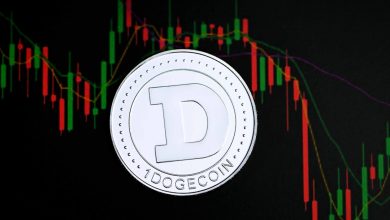How Tether (USDT) Maintains Its Peg to the U.S. Dollar
How Tether (USDT) Maintains Its Peg to the U.S. Dollar

How Tether (USDT) Maintains Its Peg to the U.S. Dollar
Can a cryptocurrency maintain a stable value amidst volatile cryptocurrency trends? Tether (USDT), the largest stablecoin, is designed to provide a stable store of value and medium of exchange in the cryptocurrency ecosystem. But how does it maintain its peg to the U.S. dollar?

The stability of USDT is crucial for traders, investors, and anyone involved in digital asset analysis. Understanding the mechanisms behind USDT’s peg is essential for navigating the complexities of the cryptocurrency market.
Key Takeaways
- The significance of Tether (USDT) in the cryptocurrency ecosystem.
- Mechanisms that maintain USDT’s peg to the U.S. dollar.
- The role of reserve backing and redemption processes.
- Impact of usdt price prediction on the cryptocurrency trends.
- Importance of understanding USDT’s stability for traders and investors.
The Role of Stablecoins in the Cryptocurrency Ecosystem
Stablecoins have emerged as a crucial component in the cryptocurrency ecosystem, providing a stable store of value and medium of exchange. This development has been instrumental in bridging the gap between traditional finance and cryptocurrency markets, facilitating easier transactions and investments.
Bridging Traditional Finance and Crypto Markets
Stablecoins serve as a vital link between traditional financial systems and the cryptocurrency market. By providing a stable currency pegged to a traditional asset, such as the U.S. dollar, stablecoins enable users to mitigate the risks associated with cryptocurrency volatility. This stability is crucial for traders and investors looking to diversify their portfolios.
The Significance of Price Stability in Volatile Markets
In the highly volatile cryptocurrency market, price stability is a significant advantage. Stablecoins offer a reliable store of value, allowing users to park their funds during times of market turbulence. This stability also facilitates more accurate financial planning and forecasting, which is essential for businesses operating in the cryptocurrency space.
Types of Stablecoins and Their Mechanisms
There are several types of stablecoins, each with its own mechanism for maintaining price stability. These include fiat-collateralized stablecoins, such as Tether (USDT), which are backed by reserves of traditional currency, and algorithmic stablecoins, which use complex algorithms to maintain their peg. Understanding these mechanisms is crucial for assessing the stability and reliability of different stablecoins.
Understanding Tether (USDT): The World’s Largest Stablecoin
With its inception in 2014, Tether (USDT) has grown to become the most widely used stablecoin, revolutionizing the way traders and investors navigate the volatile cryptocurrency landscape.
Origins and Development of Tether
Tether was launched to provide a stable alternative to other cryptocurrencies, pegged to the value of the US dollar. This innovation has been instrumental in facilitating trades and providing a safe-haven asset during market downturns.
Market Capitalization and Trading Volume
Tether’s market capitalization has seen significant growth, surpassing $80 billion. Its trading volume is also among the highest in the cryptocurrency market, underscoring its liquidity and popularity.
| Year | Market Capitalization (USD) | Trading Volume (USD) |
|---|---|---|
| 2020 | $4.1 billion | $100 billion |
| 2022 | $80 billion | $500 billion |
The Importance of the 1:1 USD Peg
The 1:1 peg with the US dollar is crucial for maintaining trust and stability. It ensures that 1 USDT can be redeemed for 1 USD, providing a stable store of value.
Price Stability Benefits for Traders
Price stability is a significant advantage for traders, allowing them to hedge against market volatility. As noted by a cryptocurrency expert, “Tether’s stability is a cornerstone for traders looking to mitigate risk.”
“Tether has become an indispensable tool for traders and investors alike, offering a stable store of value in a highly volatile market.”
Institutional Adoption Factors
Institutional investors are drawn to Tether due to its stability and liquidity. The transparency of its reserves and the ability to redeem USDT for USD are key factors in its adoption.
Tether (USDT) Market Analysis: Peg Maintenance Mechanisms
The mechanisms behind Tether’s (USDT) peg to the U.S. dollar are multifaceted, involving both reserve-backed models and market forces. Understanding these mechanisms is crucial for grasping how USDT maintains its stability in the volatile cryptocurrency market.
The Reserve-Backed Model
Tether’s stability is primarily maintained through a reserve-backed model, where each USDT token is backed by an equivalent amount of U.S. dollars or other assets held in reserve. This backing provides assurance to investors and users that USDT can be redeemed for its pegged value.
Redemption Process for Institutional Clients
The redemption process for institutional clients is another critical component. Large investors can redeem their USDT tokens for U.S. dollars, which helps maintain the peg by ensuring that the supply of USDT is managed effectively.
Market Arbitrage Forces
Market arbitrage forces also play a significant role in maintaining the USDT peg. Arbitrageurs exploit price discrepancies between USDT and its pegged value, thereby driving the price back to parity.
Creation and Redemption Flows
The creation and redemption of USDT tokens are directly related to the demand for the stablecoin. When demand is high, more USDT is created, and when demand decreases, USDT is redeemed, thus maintaining the equilibrium.
Arbitrage Profit Incentives
Arbitrageurs are incentivized by profit opportunities arising from deviations in the USDT price. By buying or selling USDT to exploit these deviations, they help to stabilize the price.
| Peg Maintenance Mechanism | Description | Impact on USDT Price |
|---|---|---|
| Reserve-Backed Model | Backing USDT with U.S. dollars or equivalent assets | Provides stability and trust |
| Redemption Process | Allowing institutional clients to redeem USDT for U.S. dollars | Manages supply and maintains peg |
| Market Arbitrage | Exploiting price discrepancies to drive price back to parity | Stabilizes USDT price |
In conclusion, Tether’s peg maintenance mechanisms are robust and multifaceted, involving both intrinsic backing and external market forces. These mechanisms work together to ensure that USDT remains a stable and reliable stablecoin in the cryptocurrency market.
Tether’s Reserve Composition and Transparency
The composition of Tether’s reserves has undergone substantial changes since its inception, enhancing its stability and credibility in the cryptocurrency market.
Evolution of Tether’s Reserves
Tether’s reserve has evolved significantly over time, with a growing emphasis on transparency and asset backing. Initially, the reserve was primarily composed of commercial paper and other assets. However, in recent years, Tether has increased its holdings in cash and cash equivalents, providing greater confidence in its ability to maintain the 1:1 peg with the US dollar.
Current Reserve Breakdown
Tether’s current reserve breakdown is more diversified and transparent than ever before. The reserve is primarily composed of:
Cash and Cash Equivalents
Tether has significantly increased its holdings in cash and cash equivalents, which now form a substantial portion of its reserves. This move has enhanced the stability and liquidity of USDT.
Commercial Paper and Other Assets
While commercial paper and other assets still form part of Tether’s reserves, their proportion has decreased as the company has shifted towards more liquid and transparent assets.
Here’s a breakdown of Tether’s reserve composition:
| Asset Type | Percentage |
|---|---|
| Cash and Cash Equivalents | 58% |
| Commercial Paper | 32% |
| Other Assets | 10% |
Attestation Reports and Auditing Practices
Tether publishes regular attestation reports, providing transparency into its reserve holdings. These reports are conducted by reputable accounting firms and ensure that the market has confidence in the stability of USDT. The attestation reports are a crucial component of Tether’s transparency efforts, demonstrating its commitment to maintaining the trust of its users.
By maintaining a robust and transparent reserve, Tether continues to support the stability and growth of the cryptocurrency market, providing a reliable stablecoin for traders and investors alike.
Market Dynamics: How Arbitrage Supports the USDT Peg
Arbitrage plays a pivotal role in supporting the USDT peg to the U.S. dollar. By exploiting price discrepancies across different markets, arbitrageurs help maintain the stability of Tether’s value.
The Arbitrage Mechanism Explained
The arbitrage mechanism involves traders buying USDT at a discount on one exchange and selling it at a premium on another, thus profiting from the price difference. This process not only benefits the traders but also helps to align the price of USDT across different platforms, keeping it close to the $1 peg.
Professional Market Makers and Their Role
Professional market makers are significant players in the arbitrage process. They provide liquidity and are instrumental in maintaining the peg by ensuring that there are enough buyers and sellers in the market. Their activities help to reduce price volatility and keep the USDT price stable.
Exchange-Based Stabilization
Exchange-based stabilization is another critical aspect of maintaining the USDT peg. This involves various mechanisms employed by exchanges to ensure that the price of USDT remains stable. Two key factors in this stabilization are bid-ask spread dynamics and cross-exchange arbitrage.
Bid-Ask Spread Dynamics
The bid-ask spread is the difference between the highest price a buyer is willing to pay (bid) and the lowest price a seller is willing to accept (ask). A narrow bid-ask spread indicates a liquid market, which is crucial for maintaining the USDT peg.
Cross-Exchange Arbitrage
Cross-exchange arbitrage involves exploiting price differences of USDT across various exchanges. This form of arbitrage helps to ensure that the price of USDT remains consistent across the market, further supporting the peg.
| Exchange | Bid Price | Ask Price | Spread |
|---|---|---|---|
| Exchange A | $0.99 | $1.01 | $0.02 |
| Exchange B | $0.98 | $1.02 | $0.04 |
| Exchange C | $0.995 | $1.005 | $0.01 |
By understanding these dynamics, it becomes clear how arbitrage supports the USDT peg, maintaining stability in the cryptocurrency market.
Historical Challenges to Tether’s Dollar Peg
Tether’s dollar peg has faced numerous challenges throughout its history, testing its stability and resilience. As the largest stablecoin by market capitalization, Tether’s performance has significant implications for the broader cryptocurrency market.
Notable De-Pegging Events
Tether has experienced several notable de-pegging events, providing valuable insights into its stability mechanisms. Two significant instances include the 2018 market stress test and the 2022 crypto market turbulence.
2018 Market Stress Test
During the 2018 market downturn, Tether’s price deviated from its peg, reaching as low as $0.90 on some exchanges. However, as market conditions stabilized, Tether’s price recovered, demonstrating its resilience.
2022 Crypto Market Turbulence
In 2022, amidst heightened market volatility, Tether’s peg was again tested. Although its price fluctuated, Tether’s mechanisms allowed it to recover and maintain its peg, reinforcing its role in the cryptocurrency ecosystem.
Market Responses to Peg Fluctuations
Market participants closely monitor Tether’s performance, and during de-pegging events, they often respond with a mix of caution and opportunism. The ability of Tether to maintain its peg is crucial for maintaining market confidence.
Recovery Mechanisms in Action
Tether’s recovery mechanisms, including its reserve-backed model and redemption process for institutional clients, play a crucial role in maintaining its peg. These mechanisms help to stabilize Tether’s price during times of stress, ensuring its continued utility in the cryptocurrency market.

Regulatory Framework Surrounding Tether Operations
Tether operates within a challenging regulatory landscape. As a major stablecoin, its operations are subject to various regulatory requirements and scrutiny.
U.S. Regulatory Oversight
The U.S. regulatory environment plays a significant role in shaping Tether’s operations. Key regulatory bodies include:
NYAG Investigation and Settlement
In 2021, Tether settled with the New York Attorney General’s (NYAG) office regarding concerns about its reserve backing. This settlement highlighted the importance of transparency.
CFTC and SEC Considerations
The Commodity Futures Trading Commission (CFTC) and Securities and Exchange Commission (SEC) have also been involved in overseeing Tether’s activities, particularly concerning its classification and compliance with financial regulations.
International Regulatory Considerations
Tether must navigate a complex international regulatory environment, with various jurisdictions imposing different requirements.
Compliance Measures and Legal Challenges
Tether has implemented various compliance measures, including anti-money laundering (AML) and know-your-customer (KYC) protocols. Despite these efforts, the company continues to face legal challenges.
| Regulatory Body | Focus Area | Impact on Tether |
|---|---|---|
| NYAG | Reserve Transparency | Settlement and increased transparency |
| CFTC | Commodity Classification | Oversight and potential enforcement |
| SEC | Securities Classification | Oversight and potential enforcement |
Comparative Analysis: Tether vs. Other Major Stablecoins
A comparative analysis of Tether and other prominent stablecoins reveals diverse approaches to maintaining a stable value. Tether (USDT), one of the most widely used stablecoins, is often compared to other major players like USDC, Binance USD (BUSD), and DAI.
USDC’s Peg Maintenance Strategy
USDC, issued by Circle, is fully backed by U.S. dollars and is known for its transparency. It achieves its peg through a reserve-backed model, where each USDC is backed by one U.S. dollar held in reserve.
Binance USD (BUSD) Approach
BUSD, issued by Binance, is also backed by U.S. dollars and is subject to regular audits. Its peg maintenance strategy is similar to USDC’s, relying on a reserve-backed model to ensure stability.
DAI’s Algorithmic Stabilization Mechanisms
DAI, on the other hand, uses an algorithmic stabilization mechanism, relying on collateralized debt positions to maintain its peg. This approach differs significantly from the reserve-backed models of USDT, USDC, and BUSD.
Collateralization Differences
The collateralization of these stablecoins varies. USDT, USDC, and BUSD are backed by a mix of cash and cash equivalents, while DAI is backed by collateralized assets, primarily other cryptocurrencies.
Transparency Comparisons
Transparency also differs among these stablecoins. USDC is known for its regular attestation reports, while USDT has faced criticism for its lack of transparency. BUSD is subject to regular audits, enhancing its transparency.
| Stablecoin | Collateralization | Transparency Level |
|---|---|---|
| USDT | Mix of cash and equivalents | Low |
| USDC | Fully backed by U.S. dollars | High |
| BUSD | Fully backed by U.S. dollars | High |
| DAI | Collateralized debt positions | Medium |
Tether’s Impact on Broader Cryptocurrency Markets
The widespread adoption of Tether (USDT) has significantly impacted the broader cryptocurrency landscape, raising both opportunities and concerns. As a stablecoin pegged to the U.S. dollar, Tether provides a reliable store of value and medium of exchange in the volatile cryptocurrency market.
Liquidity Provision and Market Efficiency
Tether enhances market liquidity by facilitating easier conversion between cryptocurrencies and fiat currencies. This liquidity provision contributes to market efficiency, allowing traders to execute transactions more smoothly and at lower costs. According to recent cryptocurrency market research, Tether’s liquidity provision has been instrumental in maintaining market stability during periods of high volatility.
Trading Pair Dominance
Tether’s dominance as a trading pair is evident across various cryptocurrency exchanges. Many cryptocurrencies are paired with USDT, making it a crucial component of the market infrastructure. This widespread use of Tether as a trading pair simplifies the process of buying and selling cryptocurrencies, further enhancing market efficiency.
Systemic Risk Considerations
Despite its benefits, Tether’s significant market influence also raises concerns about systemic risk. The potential failure of Tether could have far-reaching consequences for the entire cryptocurrency market. Contagion risk assessment is crucial in understanding the potential impact of such an event.
Contagion Risk Assessment
The interconnectedness of Tether with other cryptocurrencies and financial instruments means that any instability in Tether could spread to other parts of the market. Monitoring usdt market insights and maintaining a robust regulatory framework are essential in mitigating this risk.
Market Dependency Factors
The cryptocurrency market’s dependency on Tether is a significant factor in assessing systemic risk. As the market continues to evolve, understanding the dynamics of Tether’s influence on market trends and investor behavior is crucial for usdt analysis report and market forecasting.

Technical Analysis of USDT Peg Stability
Analyzing the technical factors that influence USDT’s peg stability can provide valuable insights into the broader cryptocurrency ecosystem. The stability of Tether (USDT) is crucial for maintaining investor confidence and facilitating smooth transactions within the cryptocurrency market.
Volatility Metrics and Deviation Patterns
To understand the stability of USDT’s peg, it’s essential to examine volatility metrics and deviation patterns. Historical data analysis reveals that USDT has generally maintained its peg, with minor deviations during periods of high market volatility.
On-Chain Analytics
On-chain analytics provide valuable insights into the behavior of USDT holders and the overall stability of the stablecoin. This includes examining blockchain transaction patterns and whale movement indicators.
Blockchain Transaction Patterns
Blockchain transaction patterns can reveal the frequency and volume of USDT transactions, helping to identify trends and potential issues with the peg.
Whale Movement Indicators
Whale movement indicators track the activities of large USDT holders, whose actions can significantly impact market stability. Monitoring these movements can provide early warnings of potential peg instability.
Market Depth and Liquidity Indicators
Market depth and liquidity indicators are crucial for understanding the overall health of the USDT market. A stable USDT peg is often associated with deep liquidity and a robust market depth.
| Indicator | Description | Importance |
|---|---|---|
| Volatility Metrics | Measures the fluctuation in USDT price | High |
| On-Chain Transaction Volume | Tracks the number of USDT transactions on the blockchain | Medium |
| Market Depth | Assesses the liquidity and order book depth for USDT | High |
By examining these technical indicators, investors and traders can gain a deeper understanding of USDT’s peg stability and make more informed decisions in the cryptocurrency market.
Future Challenges and Innovations in Peg Maintenance
As we look to the future, Tether’s ability to maintain its U.S. dollar peg will be shaped by technological advancements and changing regulatory landscapes.
Emerging Technological Solutions
The stablecoin landscape is evolving rapidly, with new technologies emerging to support more efficient and secure peg maintenance. Some of these innovations include:
- Advanced reserve management systems
- Enhanced auditing and attestation processes
- Integration with decentralized finance (DeFi) protocols
These technological advancements are expected to play a crucial role in Tether’s market forecast and overall stability.
Potential Regulatory Changes
Regulatory environments are shifting globally, with significant implications for stablecoins like USDT. Key areas of focus include:
- Central Bank Digital Currencies (CBDCs) and their potential impact on the stablecoin market
- Global stablecoin regulations and their enforcement
Central Bank Digital Currencies Impact
The rise of CBDCs could significantly alter the USD stablecoin trends, potentially offering a more regulated alternative to existing stablecoins.
Global Stablecoin Regulations
As governments and financial institutions develop clearer guidelines for stablecoins, Tether will need to adapt to comply with these new regulations, influencing USDT market trends.
Market Evolution and Adaptation
The cryptocurrency market is known for its volatility and rapid evolution. Tether must continue to adapt to changing cryptocurrency trends to maintain its peg and remain a dominant force in the stablecoin market.
In conclusion, the future of Tether’s dollar peg will depend on its ability to innovate and comply with emerging regulations, all while navigating the complex and ever-changing cryptocurrency landscape.
Conclusion: The Future of Tether’s Dollar Peg in the Evolving Crypto Landscape
Tether’s ability to maintain its dollar peg is crucial in the ever-changing cryptocurrency landscape. Our analysis has shown that Tether’s reserve-backed model, redemption process, and market arbitrage forces all play a significant role in maintaining the peg.
The tether market outlook remains stable, with the USDT performance analysis indicating a strong resilience in the face of market volatility. Cryptocurrency market research suggests that Tether will continue to be a dominant force in the stablecoin market.
As the cryptocurrency market continues to evolve, Tether’s dollar peg will face new challenges. Regulatory changes and emerging technological solutions will likely impact Tether’s operations. A thorough tether (usdt) market analysis will be essential for investors and traders to navigate these changes.
In conclusion, Tether’s dollar peg has been maintained through a combination of robust mechanisms and market forces. As the cryptocurrency landscape continues to mature, it is likely that Tether will remain a key player, provided it can adapt to emerging challenges and regulatory requirements.
FAQ
What is Tether (USDT) and how does it maintain its peg to the U.S. dollar?
Tether is the largest stablecoin, pegged to the U.S. dollar through a combination of reserve backing, redemption processes, and market arbitrage. Its reserves are audited regularly to ensure transparency and trust.
What is the significance of Tether’s 1:1 USD peg?
The 1:1 USD peg provides traders with a stable asset during times of market volatility, and its widespread adoption has made it a critical component of the cryptocurrency infrastructure.
How does Tether’s reserve-backed model work?
Tether’s reserves are backed by U.S. dollars or equivalent assets, providing transparency and trust in the stablecoin. The company publishes regular attestation reports to ensure confidence in the stability of the stablecoin.
What is the role of arbitrage in maintaining the USDT peg?
Arbitrageurs play a crucial role in maintaining the stability of Tether’s price by exploiting any deviations from the peg. When the price of USDT deviates from $1, arbitrageurs buy or sell USDT to profit from the difference, thereby bringing the price back to parity.
How does Tether compare to other major stablecoins like USDC, BUSD, and DAI?
USDC is fully backed by U.S. dollars and is known for its transparency. BUSD is also backed by U.S. dollars and is subject to regular audits. DAI uses an algorithmic stabilization mechanism, relying on collateralized debt positions to maintain its peg.
What are the potential risks associated with Tether’s dominance in the cryptocurrency market?
Tether’s widespread adoption has made it a critical component of the cryptocurrency infrastructure, but its dominance also raises concerns about systemic risk and the potential for contagion in the event of a failure.
How does Tether’s peg maintenance strategy impact the broader cryptocurrency market?
Tether’s peg maintenance strategy provides liquidity and facilitates transactions, making it a crucial component of the cryptocurrency ecosystem. However, its dominance also raises concerns about market efficiency and potential risks.
What are the future challenges and innovations in maintaining the USDT peg?
The rise of central bank digital currencies (CBDCs) and global stablecoin regulations may impact the stablecoin landscape, requiring Tether to adapt and evolve to maintain its peg.
How does Tether’s technical analysis impact its peg stability?
By examining blockchain transaction patterns and whale movement indicators, we can gain insights into the behavior of large investors and the overall stability of the stablecoin.
What is the regulatory framework surrounding Tether’s operations?
Tether is subject to various regulatory requirements, including anti-money laundering (AML) and know-your-customer (KYC) regulations, and has faced legal challenges, including a high-profile investigation by the New York Attorney General’s office.
What are the benefits of Tether’s peg to the U.S. dollar for traders and investors?
The peg provides a stable store of value and medium of exchange, reducing the volatility associated with cryptocurrencies like Bitcoin, and making it an essential tool for traders and investors.





